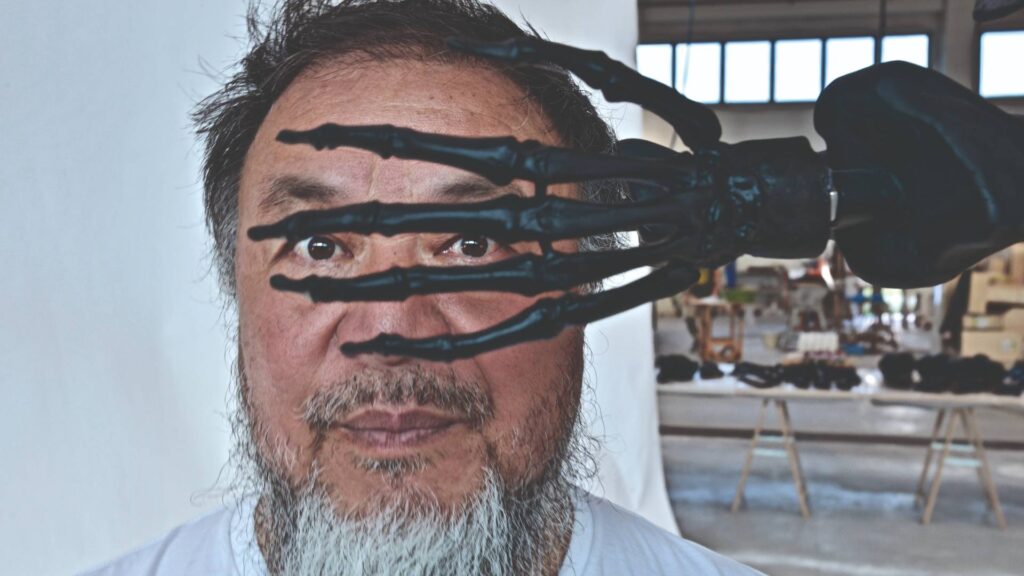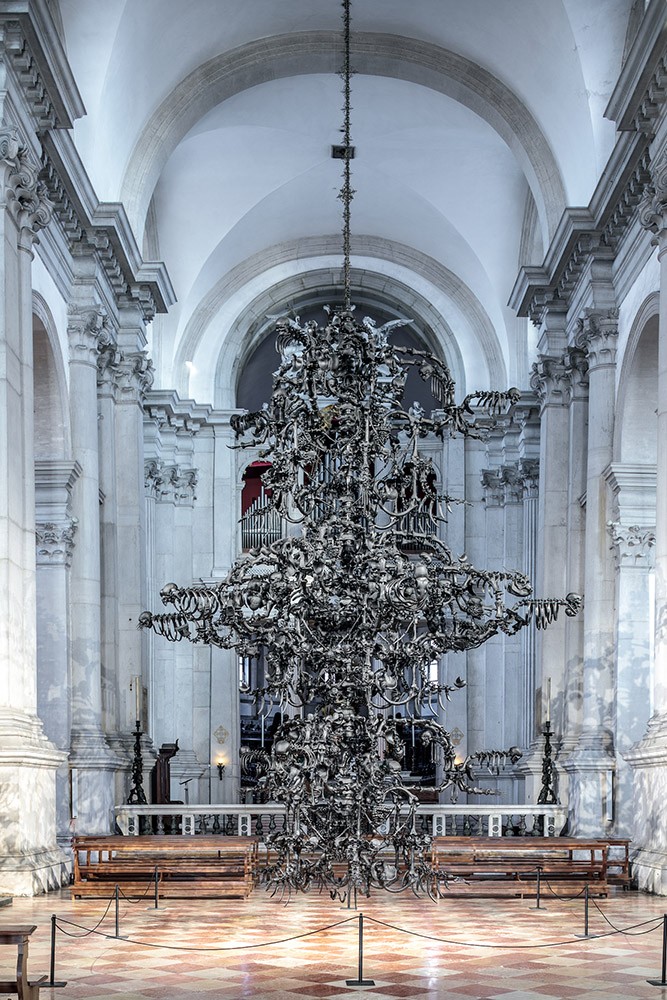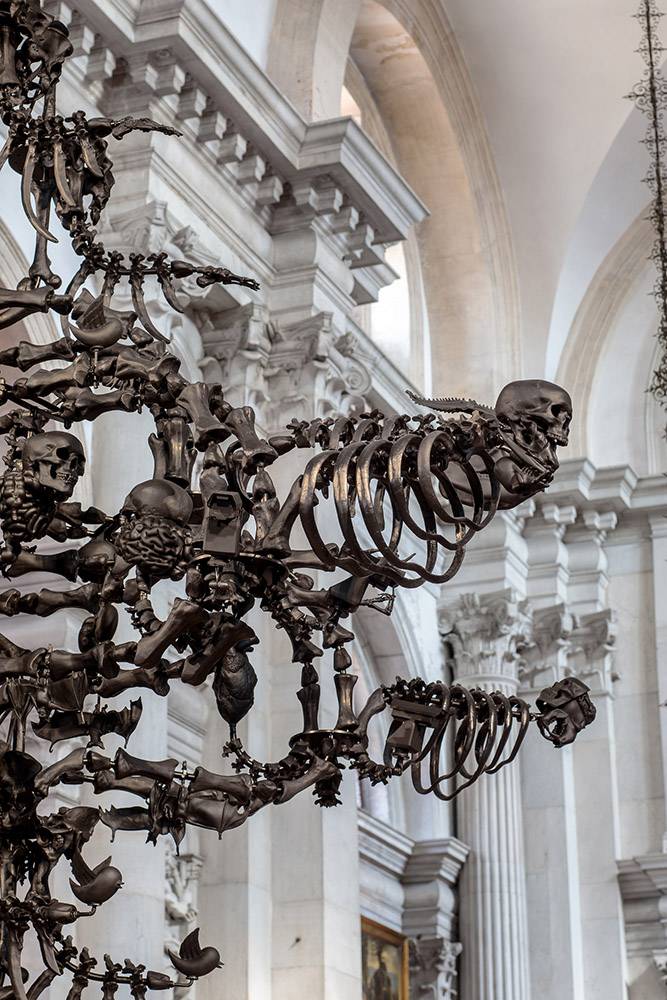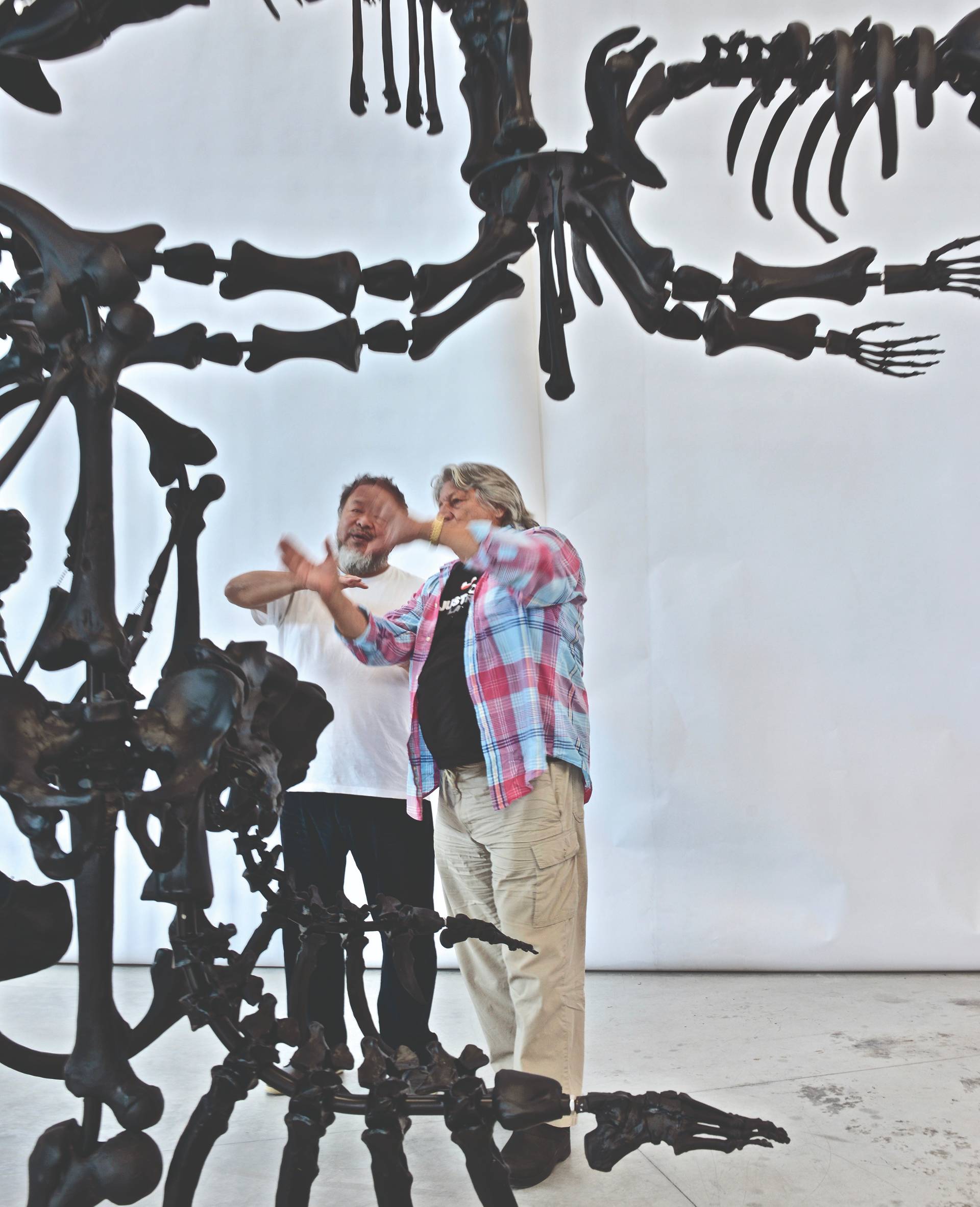
81. Venice Film Festival

80. Venice Film Festival

79. Venice Film Festival

The Biennale Arte Guide
Foreigners Everywhere

The Biennale Architecture Guide
The Laboratory of the Future

The Biennale Arte Guide
Il latte dei sogni

One of the best things to see in Venice this year is certainly Ai Weiwei’s art show at San Giorgio Maggiore. You won’t want to miss this exhibition, which opened early in September and has been produced by glassmaker Adriano Berengo and Galleria Continua.
Ai Weiwei needs no introductions; what does, though, is the innovation to be found in every new instalment of his art: languages and materials change and evolve, and the same goes for his creativity, which never fails to surprise critics and public. Of his latest pieces, the most intriguing and surprising are made with Lego. What I want to focus on, in this article, is the piece that impressed me the most: the giant glass chandelier hanging from the dome at San Giorgio Basilica. The installation is absolutely original under every point of view: for materials, assembly, size. The chandelier is almost thirty feet tall and twenty-three feet wide. You might want to look up how much it weighs on the data sheet provided. What is most interesting is the way Ai interprets the theme La Commedia Umana – Memento Mori with tools that we know of, but that the artist deconstructed and reassembled. The outer shape of the artwork is similar to a typical Murano glass chandelier, with an arms-supporting metal frame. Matte black glass won’t emit any light itself, but reflects and refracts light around it, whether natural or artificial. What elements have been used to build the chandelier? Anatomical sections, deconstructed and reassembled in a flurry of skulls, animal bones, livers, spleens, hearts, genitals, in a quite original and peculiar composition. Femurs and backbones are the most prominent components, all forged by hand in black glass. The shapes and material used are commonplace enough, but in this piece of art, their meaning is unprecedented. They remind of the bodies of saints, of those remains that are kept in Catholic churches. They are pieces, individual elements of skeletons that inspired Medieval danses macabres and adorned the tombs of French monarchs, like in the Basilique Cathédral de Saint-Denis. In some cases, remains were left to the elements for a while, and mice, insects, and other critters would eat soft tissues and let the bare skeleton out. A testimony in art? Carpaccio’s Saint George Killing the Dragon depicts the event on a floor of random bones. In the introduction of the exhibition’s catalogue, Ai Weiwei literally describes the human conditions by referencing Genesis: “for dust you are / and to dust you will return.”

The chandelier also reminded me of Baroque sculpture. A piece you may see in Venice is Giovanni Pesaro’s tomb at the Frari Basilica: a large celebratory composition that alternates the muscular presence of four African men with skeletons bearing cartouches reading observations on death and the transience of human life.
In other, more recent, epochs of art history, surrealists used the elements in their art, and the symbolists before them. Alfred Kubin depicted dozens of dancing skeletons, or otherwise engaging in ‘living’ activities. Other artists represented a very artificial reality using natural elements (Paul Delvaux, Magritte).

The assembly of the many elements that compose Ai Weiwei’s extraordinary artwork, the visual effect it generates, his ability to camouflage materials and make them appear as something else – all belong to Baroque. Baroque uses marble as if it were cloth, and cloth as marble. The operation is successful, and it is a very intelligent one. From the point of view of the result, it shows unimaginable virtuosity. A myriad pieces assembled onto the several arms of the chandelier, a task carried out by the master craftsmen at the Adriano Berengo glassworks, pretend they are something else, something different than what they are. The technical ability is amazing in every detail: the softness, the lightness of each shape is precisely the same as we find in Baroque art, with those thin veils covering the bodies –exquisite technical virtuosity and a camouflage, or maybe metamorphosis, technique that Ai Weiwei embraced thanks to the excellence of the craft at Berengo’s.

The artist conceptualized the idea, but the technical realization belonged to the several master glassblowers, who command a precious, important art heritage.Ai Weiwei is an absolutely eclectic artist from the point of view of materials used and their assembly: we all remember the rubber dinghies at Palazzo Vecchio, in Florence, and at Sant’Antonin, in Venice. His explorations, his passion for Lego, his gigantic, technically outstanding pieces. In this occasion, the artist found inspiration in glass, and inspired glass in turn, captivating our attention. Adriano Berengo indulged him every step of the way, and maybe inspired the artist himself. Or, rather, I would say ‘challenged’. The two challenged each other in a sort of gentlemanly duel on glass, with glass, and for glass. The result is a very new and very original way to look at this material.